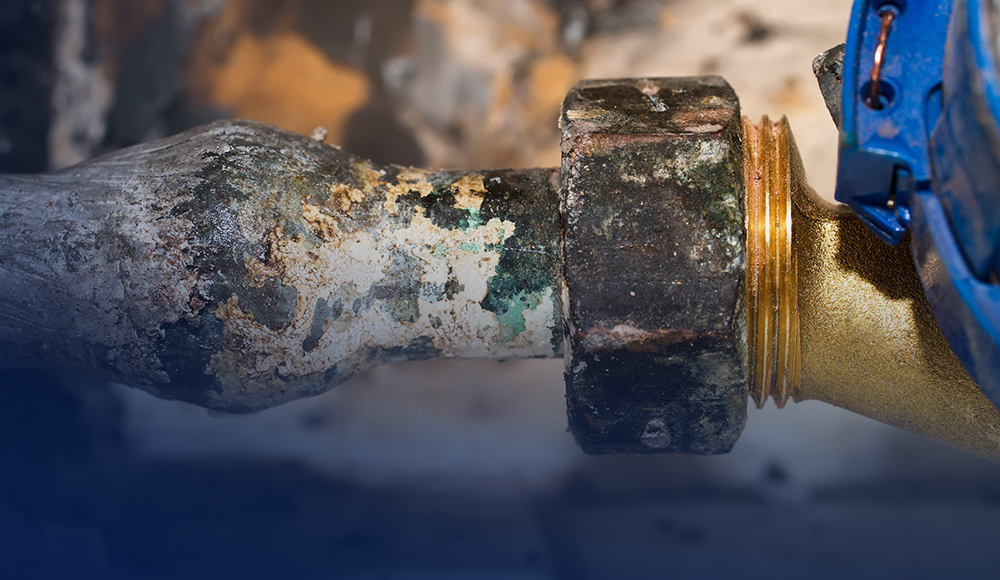

INSIGHT
Lead and Copper Rule Revisions: Inventorying, Replacement Planning and Funding
Connect with us
Effective as of December 16, 2021, the U.S. Environmental Protection Agency (EPA) announced its Lead and Copper Rule Revisions (LCRR), which strengthens the existing Lead and Copper Rule. The LCRR outlines new requirements for sampling and erosion control, public education and outreach, lead testing in schools and childcare facilities and a public inventory of lead service lines. Ultimately, the revisions aim to protect communities from lead exposure. The original Lead and Copper Rule (LCR) was issued in 1991 and established national requirements for lead in drinking water. This 1991 rule replaced an interim rule from the 1974 Safe Drinking Water Act, which granted the EPA authority to set standards for drinking water.
Today, the key difference between the new rule (LCRR) and old rule (LCR) is that the new revisions concentrate on removing lead from communities, whereas the previous version was more focused on monitoring impacts from existing lead pipes.
Additionally, for the first time, the LCRR mandates all water systems to submit an inventory of every service line in their territory—regardless of the presence of lead. The inventory must include material types for both the utility-owned and customer-owned portions of the service line. The inventories are required to be made available to the public and should be used as the basis for other initiatives, like replacing those lead service lines.
The initial inventory is due to the EPA by October 16, 2024, along with a lead service line replacement plan. Getting an early start to creating an accurate, thorough inventory will be critical for most water systems. While the EPA allows for service lines to be labeled “lead status unknown,” it is discouraged in other parts of the LCRR. Water systems may risk a complicated compliance process and unnecessary expenses if they provide an inventory that is not accurate or comprehensive enough. For example, “lead status unknown” service lines are counted toward a system’s lead service line tally. This could push a system closer to the EPA’s lead “action” level, which may require a significant number of required excavations.
Bartlett & West is offering its clients a solution to lead service line requirements in the following ways:
Data Acquisition:
- Historical Records: This will be the preferred method, as it will likely result in the lowest cost to the client.
- Customer Survey: This survey is created as part of the ArcGIS solution developed by ESRI. Customers will be emailed a survey regarding the information about their water service line. The survey will be returned to Bartlett & West and will populate a GIS map after QA/QC.
- Field Checks: While this is the least preferred method and has the highest cost, it may be necessary for unknown lines.
GIS (through ESRI/ArcGIS):
Data will be combined into one interactive map for both the customer and utility side of service lines. The service includes a dashboard that tracks inventory progress and can even provide a website that can be used by a client to make the inventory information public.
Final Inventory and Replacement Plan:
- Each state will require slightly different information for the inventory, so Bartlett & West will customize the final product based on state requirements.
- We will also help the client develop a realistic plan to address replacement of all identified lead service lines.
Lastly, Bartlett & West also offers to assist clients in pursuing funding for lead service line inventories and replacement. The following is a list of potential funding partners:
- Drinking Water State Revolving Fund (DWSRF)
- HUD Community Development Block Grant
- Assistance for Small and Disadvantaged Communities Grant
- Lead Testing in School and Child Care and Drinking Water Grant
- Reducing Lead in Drinking Water Grant
- Water Infrastructure Finance and Innovation Act (WIFIA)
Here are more resources for additional information:
- Revised Lead and Copper Rule | US EPA
- Lead Service Line Inventories: Everything You Need to Know (unearthlabs.com)
Tell us about your project
We’d love to work with you. Tell us the services you are seeking and one of our team members will connect with you.